The phenomenon of anthropomorphic stelae has been studied for some time in the countries where their occurrence is most concentrated, particularly in the south of France, northern Italy, and the Iberian peninsula, as well as in Ukraine. Discussions concern questions of style, context, and function. This paper looks at anthropomorphic stelae throughout the European distribution area. The chronology of stelae has been extended since the author’s study published in 2017 (Vierzig Reference Vierzig2017) particularly in terms of our knowledge about older stone groups and stelae as precursors of anthropomorphic stelae, and contexts which provide important chronological and functional information. Furthermore, there are also new discoveries in almost all distribution areas.
The terminology for anthropomorphic stelae in the literature is confusing. For example, sometimes different terms are used for undecorated stelae, stelae that are decorated on one side, and those decorated all around. The terms menhir, stele or stela, statue-stele, statue-menhir refer to morphological differences, but also have a chronological aspect. In addition, the nomenclature in use internationally is not uniform. In agreement with some authors (eg, Mezzena Reference Mezzena1998; Gutherz et al. Reference Gutherz, Jallot and Garnier1998; Koukouli-Chrysanthaki Reference Koukouli-Chrysanthaki2007), the term anthropomorphic stele is used exclusively in this paper. In contrast to earlier prehistoric representations of human beings, the anthropomorphic character of the stele is determined by other features: style, elements of representation, and size. They are uniform over a large area, although they can be distinguished by regional styles.
Copper metallurgy led to important innovations in the second half of the 4th and 3rd millennia, with prestigious objects made from copper, such as weapons and jewellery, often depicted on the stelae. Other innovations of the time, such as the use of draught animals, wheeled vehicles, and ploughs, are other attributes depicted. In this context, the stelae themselves are one element of the innovations of this epoch. Furthermore, they can be seen as a bundling together of all innovations because of the range of images depicted on them.
The chronological classification of stone objects is notoriously difficult but the increasing number of recorded contexts makes it possible in many cases to date anthropomorphic stelae exactly. Most of the datable contexts of stelae are burials. In many cases, they were also found erected in rows; some of such ritual stone arrangements can also be dated. Images of datable objects on stelae are important clues for the chronological classification within the period between 3500 and 2200 bce. Anthropomorphic stelae are embedded in the megalithic culture of Europe. Menhirs, ie, undecorated standing stones, are discussed as predecessors of the stelae. Anthropomorphic stelae with different anatomical designs and new weapons, which continued to be erected in some regions following the beginning of the Bronze Age, are discussed as successors.
As the distribution map shows (see Fig. 14 below), those regions where anthropomorphic stelae occur are not connected. The reasons for concentrations and gaps remain speculative. Locally, there seem to be topographically preferred sites. Some explored territories show stelae in relation to paths, burials, settlements, or metal deposits, for which they presumably had symbolic significance.
As a result of the boom in archaeogenetic knowledge in recent years, the question arises again as to whether the idea of erecting anthropomorphic stelae came with migrating groups from eastern Europe. Analyses of old and modern DNA samples show multiple movements from east to west; the largest of these was a migration during the Yamnaya period, from 2800 bce onwards. As the Pontic stelae are associated with the Yamnaya, one hypothesis was formulated that it was these steppe inhabitants who brought the idea of the stele to central and western Europe. However, archaeological data and contexts in western Europe testify that the migration of the Yamnaya population has nothing to do with the origin of anthropomorphic stelae.
What function stelae had is a question frequently asked. Many hypotheses have been put forward over time, few of which stand up to recent research. The most common view today is that anthropomorphic stelae are representations of the ancestors, being decorated with prestigious objects illustrating the elevated status of those represented. This hypothesis has been plausibly developed by Spanish and Swiss archaeologists for their local contexts. However, as far as the many stelae without badges of status objects are concerned, the question must be investigated as to whether the erection of monumental human figures might document humanity’s new self-confidence in the world.
PEOPLE IN STONE
Over the last 20 years, a focus of prehistoric research has been on the discovery and study of European anthropomorphic stelae.1 The number of these fascinating people of stone, currently over 1000, is still increasing due to new discoveries (Vierzig Reference Vierzig2017).2 What is special about the stone stelae from this period is their size and their style of representation. In contrast, most of the anthropomorphic representations of earlier times, from the 40,000-year-old figurines of the Aurignacian period up to Neolithic statuettes, were only hand size. These mobile sculptures, which could be carried on the body or in the hand, put down anywhere and taken away again, was manageable – human figures in miniature size. They could also be made quickly from clay. They probably broke frequently but could be easily replaced.
We are dealing with large anthropomorphic sculptures in stone, stone-masonry that took time and effort and required professional craftsmanship. Unlike many of the figurines, anthropomorphic stelae are not designed in a naturalistic way; rather, they stylise and abstract the human figure. This mode of representation relates, on the one hand, to their monolithic form. Beginning with an elongated smoothed stone block, merely the shoulders or the base of the neck or the head were carved out; this was sufficient for a large number of stelae to give the standing stone a human form. Of the 359 stelae found in the Pontic area for example, 233 (65%) have only a suggested anthropomorphic silhouette (Fig. 1). On the other hand, the anthropomorphic engravings or reliefs, facial features or limbs, were also applied strongly simplified. They appear, symmetrically, as if subordinate to the form of the stone itself.
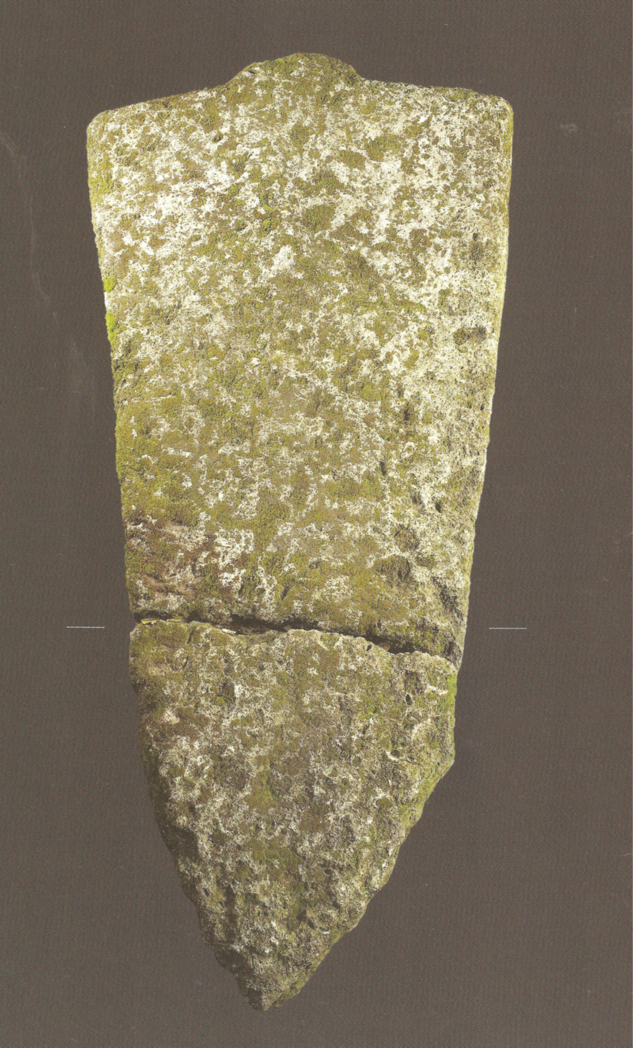
Fig. 1. Privil’ne 1, Ukraina. Cat. No. 0187 (Zabasta Reference Zabašta2009, pl. 17, reproduced by permission)
It is the limitation to a few geometrically designed elements that gives the stelae their special appearance. In many cases, the face, arms, and especially the legs were also omitted. On 20% of the stelae overall, the face was chosen to be represented reduced to nose and eyebrows in the shape of a T, which gives them their characteristic abstractness (Fig. 2).3 In 73 cases, the addition of eyes makes the face, seen through our modern eyes, appear more alive (Fig. 3). The mouth is missing in most cases. Arms and legs, when present, show no movement; thus, the figures appear static. The position of the arms, with the forearms lying horizontally, hanging, or bent upwards, is almost always symmetrical. Legs were given to the stelae only in two regions. In Rouergue in southern France, they begin below the belt and do not reach down to the bottom of the stone. They ‘hang’ like two bands, whose ‘fringes’ represent the toes. In this way, they give the impression that the figure is seated (see Fig. 7). The other area where legs are represented is the Black Sea region; here, imprints or outlines of the feet take the role of the legs. In some regions, colour has been found on stelae, for example in two of three stylistic groups in Provence (the stèles à chevrons and the early aniconian stelae) and in numerous stelae north of the Black Sea. In the latter, a belt was usually outlined, often with ochre (Fig. 1).
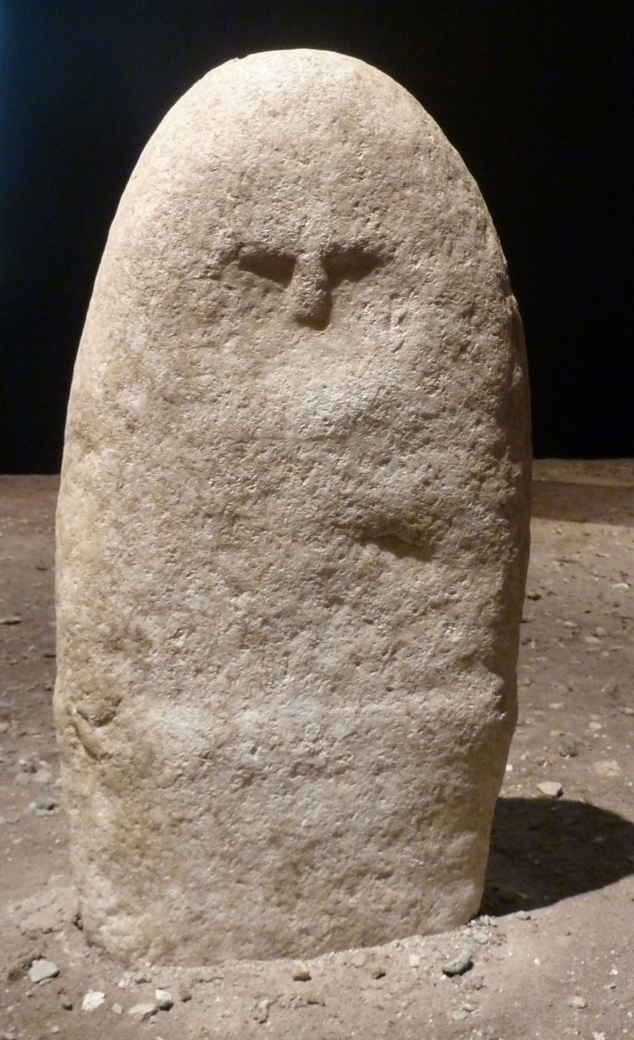
Fig. 2. Arco 6, Trentino. Cat. No. 0523 (photo: S. Hansen)
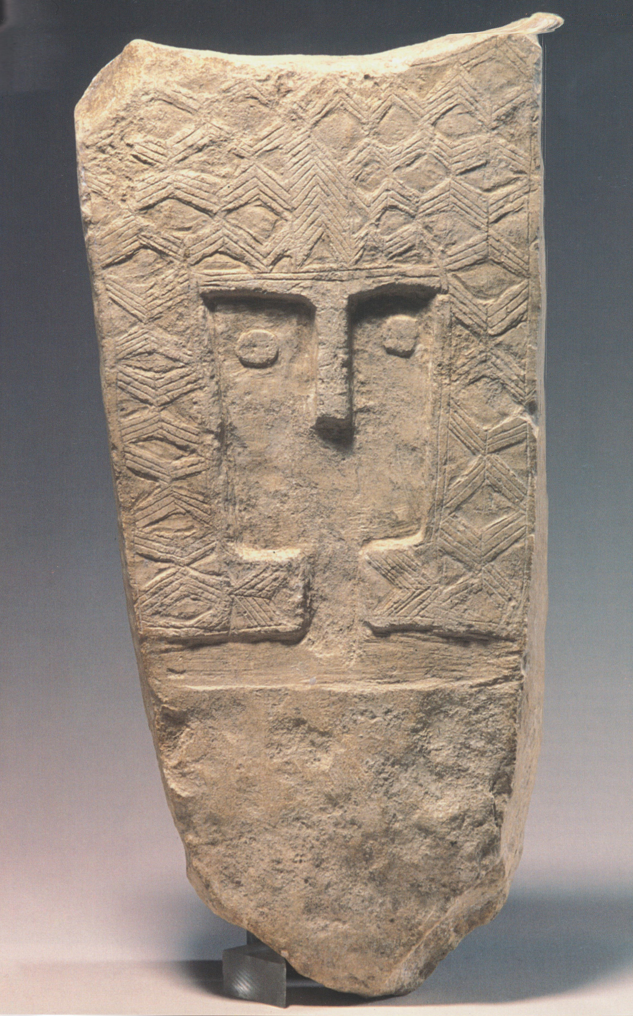
Fig. 3. La Lombarde 1, Provence. Cat. No. 0987 (D‘Anna & Renault Reference D’Anna and Renault2004, fig. 39, reproduced by permission)
What is new, apart from the mode of representation, is above all the monumental size of these human figures. Although smaller, 30–50 cm tall stelae from burial contexts in Spain, southern France, Italy, and the Maltese archipelago also belong to the category of stone stelae, the majority are characterised by their height as half the size to full human life-size and even oversized humans. The iconographic tradition is changing, as humans are now represented in a new magnitude.
STELE AS AN INNOVATION IN THE 4TH AND 3RD MILLENNIA bce
As early as the 5th millennium, metallurgical centres with ore smelting and copper processing had been established in the ore-rich south-east of Europe. Weapons, jewellery, and tools made of copper and gold were already placed as grave goods in distinctive individual graves. In the middle of the 4th millennium an epoch of profound transformations began throughout Europe. Copper was increasingly being used. Copper metallurgy was being further developed technically. Now, copper alloys with arsenic and an optimisation of copper casting appeared. Silver was also used. The new casting technique made it possible to produce complicated shapes such as axes with a shaft-hole. Artefacts made of arsenical copper or arsenical bronze, as well as heavy cast tools, had advantages in use compared to their predecessors. Arsenical bronze, with its now apparently popular silvery colour, was harder than pure reddish copper; furthermore, heavy shaft-hole axes made from copper could be produced in an ergonomically better way with a shaft-hole on the side, which was not possible with stone axes because they would have been too fragile (Hansen Reference Hansen, Apakidze, Govedarica and Hänsel2009). Copper objects, weapons, and jewellery were prestigious and representative innovations. Specific objects were produced and used in each region, as can be seen from the range of finds (see below). Copper weapons, tools, and jewellery as grave goods identify the buried individual as being of high social standing. Copper objects on stelae reflect the objects produced or imported in the region and are depicted as status objects of the individual represented.
Images of weapons, according to general interpretation, make stelae into male figures. Ninety stelae across the entire distribution area were provided with axes. Most of these occur on stelae in the north Pontic area (Fig. 4), followed by northern Italian stele depictions. With few exceptions, stelae with axes are restricted to these two areas. Many illustrations of weapons make it possible to identify precisely the actual weapons on which they were based: shaft-hole axes, whose shaft ends in the blade or protrudes at the top, are depicted on stelae from both areas. The real tools made of copper became widespread in the Black Sea region in the second half of the 4th millennium (Hansen Reference Hansen, Apakidze, Govedarica and Hänsel2009). In northern Italy, shaft-hole axes on stelae were initially modelled more on stone battle axes (Casini Reference Casini1998) while copper axes, including the shaft-hole axes dated somewhat later, also belong to the range of finds depicted in this area (Fig. 5).
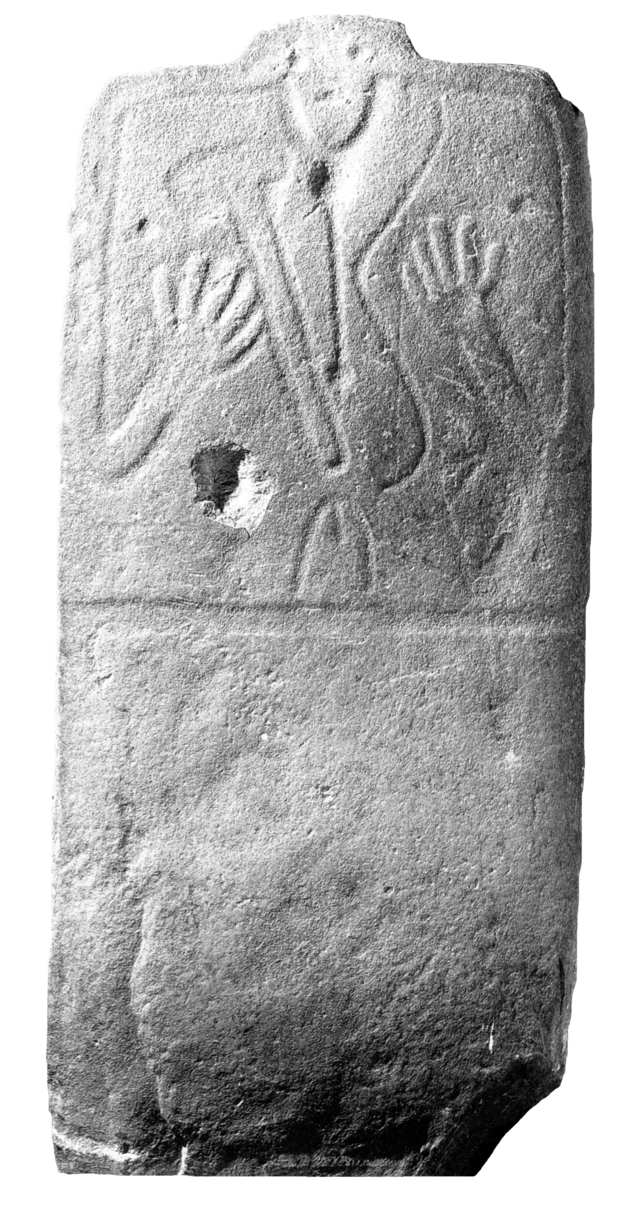
Fig. 4. Natalivka, Ukraina. Cat. No. 0246 (Ambrosio Reference Ambrosio1998, pl. 5, reproduced by permission)

Fig. 5. Ossimo 9, Val Camonica. Cat. No. 0585 (Anati Reference Anati and Fedele1990, fig. 234, reproduced by permission)
The weapon most frequently depicted, on over 200 stelae, is the dagger. Here, too, their real models are usually easy to recognise. A large number of stelae in Italy show the triangular dagger with or without central rib and semicircular grip knob known as the Remedello dagger, after the burial ground near Remedello Sotto in the Po valley (Fig. 6). The distribution of Remedello daggers depicted on stelae coincides with the densest concentration of real dagger occurrences and extends from the Lunigiana near La Spezia to the north into the Alps. In the same way, other depicted dagger types often make their actual models relatively easily recognisable. A longish-triangular motif with a hole, hanging from a carrying strap, for a long time simply called l’objet, which can be recognised on 85 stelae in southern France, most probably also represents a dagger (Fig. 7), in this case in a sheath (Serres Reference Serres2002; Reference Serres, Gasco, Leyge and Gruat2006). Daggers are common occurrences in the finds repertoire of southern France which suggests an interpretation of the objet as a dagger. Sardinia is equally rich in dagger finds; here, double daggers with two blades adorn the male stelae. No daggers are depicted on the stelae in the Pontic area.
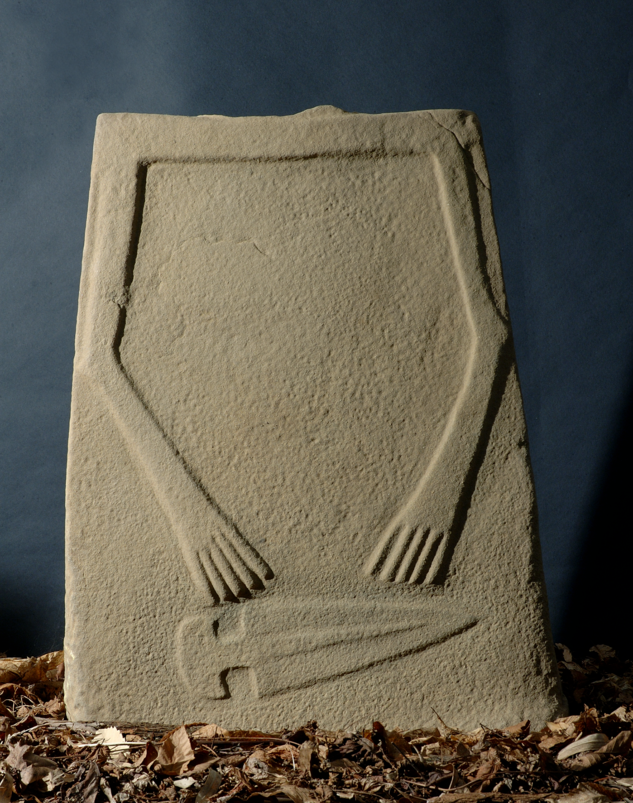
Fig. 6. Groppoli 8, Lunigiana. Cat. No. 0497 (photo: SBAT Toscana, Pisa)

Fig. 7. Pousthomy 1, Rouergue. Cat. No. 1199 (Philippon Reference Philippon2002b, pl. on p. 33, reproduced by permission)
Daggers as the most frequently depicted weapons on male stelae figures obviously had an outstanding importance which is also evidenced by the number of daggers added to graves. As a single weapon they are depicted on the belly of the figure, with the – often artistically designed – handle to the right. The weapon, which always sits at the ready, and its position on the carrier were certainly depicted correctly and thus the prestigious object on the stele is clearly visible to everyone, presumably as on the living man. A smaller number of halberds, maces, or hammers and crooks, as well as bows and arrows on stelae of the later phase, are represented.
While weapons are considered male attributes of stone stelae, the gender assignment of jewellery is less clear. Images of necklaces and bracelets, in single and multiple rows, arm and ear jewellery, diadems, and parts of belts made of copper are varyingly attributed to the genders from region to region. Necklaces are not an exclusively female attribute. Of 132 stelae which are represented with necklaces or lunulae across the region, only 53 (c. 40%) are female figures; 54 stelae with necklace have no clear gender. An indicator for the assignment of jewellery to female figures is the presence of breasts (Fig. 8). In the group Aosta/Sion, stelae of style 2 (the younger of 2 styles) without weapons and with a belt ending in loops are considered female, although they do not have breasts. At the same time, there are also figures shown with weapons and necklaces. This applies to 25 stelae in different regions.

Fig. 8. Akanthos, Greece. Cat. No. 0400 (photo: Museum Thessaloniki)
In addition to copper metallurgy, which was important for this period, other technological innovations between the Orient and northern Germany are the wheel, the wagon, and the plough. They enabled far-reaching economic changes. Together with the use of cattle as draught animals, wagons increased mobility; ploughs allowed for a better use of the land. Draught animals, teamed with yoke and tiller, the Zugkraftkomplex (Sherratt Reference Sherratt, Fansa and Burmeister2004), appeared in the same period as the increasing use of secondary animal products such as milk, dairy products, and wool, and the riding of domesticated donkeys and horses. Put simply, compared to the previous use of animals mainly as meat producers, animal husbandry became increasingly economically significant. The easier transport of heavy goods as well as the possibility of developing areas with less fertile soil for agriculture improved the economic quality of life. The keeping of animals in this new function, including wagon and plough, from the middle of the 4th millennium onwards, probably did not appear equally everywhere as a whole package (Greenfield Reference Greenfield, Mulville and Outram2005). However, the individual interacting innovations had ‘transformative potential’ (Leppek Reference Leppek2017) for existing societies.
The innovations of wagon, plough, and draught animal and cart can be found as illustrations on some stelae in northern Italy (Fig. 9), Germany (Fig. 10), and Ukraine. That these technical-economic innovations were of great importance is shown by a large number of analogous representations on rock paintings in the Val Camonica and Mont Bego region, as well as on grave slabs and ceramics in central Europe. In Italy, plough tracks have been found in various sanctuaries that also have stelae. It can be concluded from this that the act of ploughing was not only of economic but also of ritual significance. A symbolic value was probably attached to carriages and carts as well as ploughs (Reinhold et al. Reference Reinhold, Gresky, Berezina, Kantorovich, Knipper, Maslov, Petrenko, Alt and Belinsky2017; Maran Reference Maran2017) which is why they were placed on stelae.
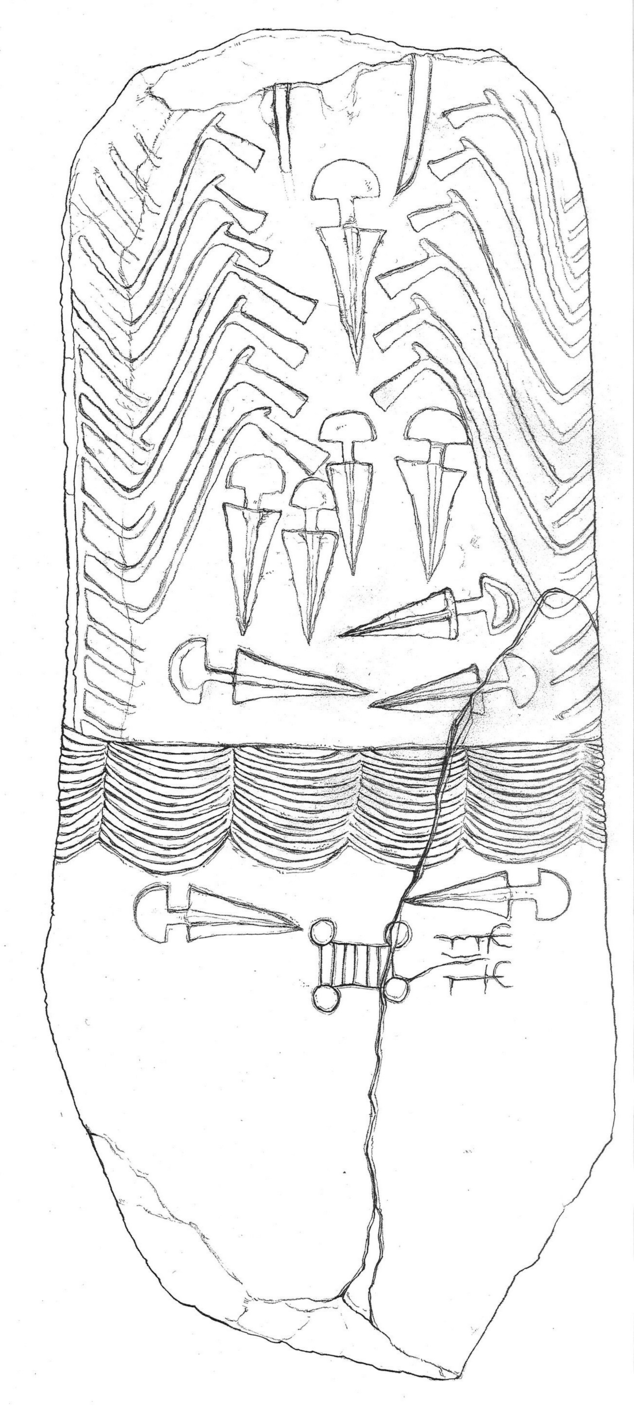
Fig. 9. Algund or Lagundo 2, Alto Adige. Cat. No. 0531 (design: Museum Bolzano)

Fig. 10. Züschen, Germany. Cat. No. 1318 (Raetzel-Fabian Reference Raetzel-Fabian1988, fig. 167a, reproduced by permission)
As a result of technical and economic innovations, European societies also underwent social transformations. The development of new technologies and new economic forms led to social inequality across regions. Specialised craftsmanship became necessary and, not least, wealth developed. Differences in rank, which were already apparent in the 6th and 5th millennia (Hansen Reference Hansen2017), increased. Archaeologically, these differences are evident in the lavish decoration and the extraordinary size of outstanding tombs in the second half of the 4th millennium (Hansen Reference Hansen, Hansen and Müller2011) which confirmed the wealth and thus the high social status of certain buried individuals. Copper tools and jewellery show the prestige of their wearer. Weapons in particular present the deceased as fighter, symbolising his fighting strength and power. This social function can also be seen in the stele figures decorated with weapons and rich jewellery.
A series of stelae show a much larger number of weapons than a fighter needs (Hansen Reference Hansen and Müller2002; Reference Hansen, Hansen and Müller2011) and often these weapons are arranged in a repeating order on the stone human being. In northern Italy, there are 45 stelae with a presentation of more weapons than a fighter needs. Sometimes there are weapons of one type, often of two or three, occasionally even four types of weapons, represented as clusters up to 23 in number (eg, Algund/Lagundo 2, Fig. 9), on one stele. Some stele figures in northern Italy have shafted weapons symmetrically arranged in the anatomically correct position of the arms, where one weapon does not stand for one arm, but a whole number of weapons stacked on top of each other give the impression of multiple arms (Fig. 11). When weapons take over the function of body parts they impressively symbolise how essential they are for their wearer. The use of several weapons as limbs in the depiction of the man demonstrates how dynamically he handles his weapons. It shows the identity of the man who merges with his role as a fighter.

Fig. 11. Pat 4, Ossimo, Val Camonica. Cat. No. 0606 (Poggiani Keller Reference Poggiani Keller2009, fig. on p. 24, reproduced by permission)
Graves with an exaggerated display of weapons can be found between Mesopotamia and the Caucasus via the Balkans and the Carpathian region to central Germany (Hansen Reference Hansen, Hansen and Müller2011). Therefore, in this region, social upper classes existed whose men were buried as fighters with many more weapons than they needed. The accumulation of weapons did not have had any practical use for a man; it symbolically expresses power and prestige. This symbolism was presented in graves with the widespread code ‘over-abundance of weaponry’ (Überausstattung mit Waffen) (Hansen Reference Hansen, Hansen and Müller2011).
Interestingly, the regional distribution of ‘over-supplied’ graves does not correspond to that of stelae with this characteristic. In the Black Sea region, where numerous graves with splendid and plentiful outfits of weapons are known, only three stelae bear this characteristic. On the other hand, in northern Italy where, as mentioned, many stelae of this type exist, no such graves have been found. How then can we explain the impressive number and design of the northern Italian stelae with their over-supply of weapons? The contrast between the archaeological contexts without social distinction in burials and the symbolically displayed power and superiority on stelae of this region poses a problem. Perhaps power and wealth here were related to function (Mottes & Nicolis Reference Mottes and Nicolis2015)? If this hypothesis is correct for northern Italy, the people depicted on the stelae belonged to a group of temporary dignitaries whose completed official function no longer played a role for the goods placed in their graves. After the end of their ‘term of office’, or with their death, they were buried as ‘equals’ without any special preference, while the stelae with their rich supply of weapons symbolically represented the position of the office bearer rather than the specific person.
CHRONOLOGY AND CONTEXTS
Most of the anthropomorphic stelae discussed here were created and used between 3500 and 2200 bce. This innovative epoch was the focus of the author’s previous study (Vierzig Reference Vierzig2017), the chronological framework of which is here extended to older and younger finds. Before considering the chronological categorisation, the archaeological contexts of the stelae are discussed as they are indispensable for the chronological classification.
Most of the stelae were recovered without context and therefore could not be dated. However, an increasing number of new finds originate from find contexts that could be dated. The majority of these are related to burials, most of them on the Iberian peninsula, where Bueno and her team systematically recorded their position (Bueno et al. Reference Bueno, Balbin and Barroso2007). Some of the stelae were found inside tombs of different periods: in chamber tombs and cists, passage tombs, and gallery graves. Others stood in the passage or at the entrance of tombs, some were found in a rearranged position inside the tomb. The dating of the stelae is based on the respective tomb type. Those arranged individually or in rows were also found in the burial area without direct relation to a tomb.
A large number of stele contexts consist of stone rows or circles. Often a stone arrangement can be reconstructed from group finds (eg, Arco and Algund/Lagundo, Pontevecchio, and Groppoli). Most of these stone settings, and also singular, standing stelae, had no relation to tombs but were erected at prominent sites in the landscape.
Many more stelae than the examples from primary contexts mentioned above were recovered from secondary contexts, which can only provide a terminus ante quem. Besides stone settings and sites in settlements, burials are again the most common contexts in which whole stelae were reused. In the Black Sea region, over 200 older stelae served as cover slabs for Yamnaya tombs (Telegin & Mallory Reference Telegin and Mallory1994). In many contexts, fragmented and destroyed stelae are found (see below).
Anthropomorphic stelae, artistically decorated and clearly recognisable by anatomical features, were created from 3500 onwards. As discussed above, their dating is often based on the objects depicted on them, most notably the Remedello type dagger which can be very clearly recognised on many stelae in Italy and the Alpine region. The distribution period of Remedello daggers ranged from 3300 to 2700 bce (Dolfini Reference Dolfini2010; Dolfini & Giardino Reference Dolfini and Giardino2015) and is therefore assumed to be the period of construction and erection of stelae bearing this motif. Two of the three types of halberds identifiable on stelae also belong to this phase: the Arco type, with a symmetrical blade, and the Spilamberto type, with a leaf-shaped blade. The archaeological model of the latter is made of stone and has been found only once but it is depicted on 13 stelae in Val Camonica and Valtellina (De Marinis Reference De Marinis1994b; Horn Reference Horn2014; Dolfini & Giardino Reference Dolfini and Giardino2015). Shaft-hole axes, which belong to the second half of the 4th millennium onwards (Hansen Reference Hansen2013), mainly adorn stelae in the Pontic area and in northern Italy.
The most recent phase of stelae, which lasted until 2200 bce, can be dated and classified in the same way as the preceding phase, by daggers engraved on stelae and their typology. Daggers that resemble the Spanish Ciempozuelos type and are dated to the Beaker period (Bagolini et al. Reference Bagolini, Dal Ri and Tecchiati1994; Casini et al. Reference Casini, Fossati and Simonelli2007) are depicted in small numbers. This is also true for daggers with a laurel leaf blade, which date from the same period (Favre & Mottet Reference Favre and Mottet2007). Other elements of the pictorial repertoire that occur with Bell Beaker daggers and correspond exactly to their archaeological counterparts are axes (Casini Reference Casini1998) and halberds of the Beaker period (Villafranca type) can also be recognised on stelae (De Marinis Reference De Marinis1994b; Horn Reference Horn2014) but they only occur on stelae in northern Italy. Bows and arrows, which also fit into the Beaker period, adorn stelae in the Alps, in the south of France, the Iberian peninsula, and the Pontic region. This type of weapon is less suitable for precise dating because bows were used long before and after the Beaker period. However, bows and arrows became emblematic weapons at this time (Harrison & Heyd Reference Harrison and Heyd2007) and stelae on which a bow is the only weapon to occupy the prominent place on the figure’s chest could date from this period. The Beaker period is the last phase in which the stelae that are the central theme here were erected in Europe. Stelae from the Bronze Age look different.
The two extensive Alpine contexts from the 3rd millennium – Petit-Chasseur in Sion, Valais, and St-Martin de Corléans in Aosta on the southern side of the Great St Bernard Pass which separates the two sites – make a differentiated chronological classification possible. These are large, well-preserved necropolises of similar kind, in each of which many stelae were used. At both sites there are stelae of an older style from the late Neolithic, 2700–2500 bce (Fig. 12), and of a younger style (Fig. 13), dated to the Beaker period, 2500–2200 bce (Baudais & Honegger Reference Baudais and Honegger1995; Gallay Reference Gallay and Besse2014a). A new context from Sion in 2019 includes six stelae, three of which are engraved, as well as fragments and unfinished pieces in a double row. No grave was found here but the site is an extension of the necropolis and may have made it into a really large burial and ritual site (hotlink 1; hotlink 2). An alternative interpretation could be that this site is a kind of storage and workshop for sculpted stelae that were, at the time, being engraved for placement in the necropolis. A find from 2018 in another area of Sion included two stelae in connection with a cist tomb (hotlink 3). The stelae of the tomb find correspond to the older style of Petit-Chasseur (style A), one of the stelae of the rows to the younger style. The younger stelae from Sion and Aosta (style B) are examples of how the decoration became more and more opulent and elaborate. The stelae of style A (Vierzig Reference Vierzig2017), like many others, are dressed with the Remedello dagger and wear necklaces with large double spirals. The stelae of style B, in addition to lavish jewellery and various weapons, are decorated with a variety of patterns and ornaments that is unique and reflects the splendid clothing of the represented, and certainly also their wealth and rank.

Fig. 12. Petit-Chasseur 2, Valais, Switzerland. Cat. No. 0721 (Gallay Reference Gallay2011, pl. on p. 8, reproduced by permission)
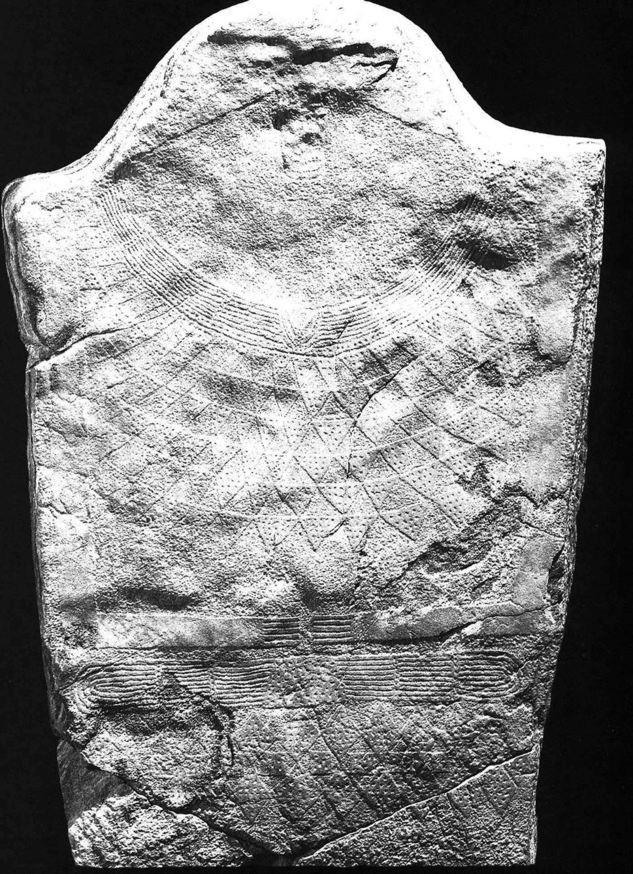
Fig. 13. Aosta 3 South, northern Italy. Cat. No. 0650 (Ambrosio Reference Ambrosio1998, pl. 21, reproduced by permission)
At the break between the two styles of stelae in Sion, partly also in Aosta, there was a visible cultural change, including the destruction of previous structures, reorganisation, and reconstruction. Stelae of the first phase, standing in alignment, were taken down and hewn for reuse in new tombs. For this purpose, the stone stelae were narrowed, provided with door-like entrances, or turned round. A further, second total change and destruction also took place in Sion, less than 100 years after the younger stelae had been erected, during the Beaker period (Harrison & Heyd Reference Harrison and Heyd2007; Gallay Reference Gallay and Besse2014a). There was not one stele from the first or second phase that remained undamaged and in its original position.
Transformations like those visible and datable in these alpine contexts also took place at sites of anthropomorphic stelae in other regions. Take, for example, the Ukrainian stelae mentioned above, which were recovered as cover slabs of tombs of the Yamnaya horizon of the Early Bronze Age (3rd millennium), where they are in secondary use (Telegin & Mallory Reference Telegin and Mallory1994). A special case is Nal´čik in the north Caucasus, where all 24 stone slabs of a tomb were reused stelae (Belinskij et al. Reference Belinskij, Hansen, Reinhold, Tonussi and Rova2017). In some sanctuaries of Val Camonica, decorated stelae were removed from their original position and integrated, fragmented, into structures built later on the ritual ground (Fedele & Fossati Reference Fedele, Fossati, De Marinis, Dalmeri and Pedrotti2012). It is often assumed that the alteration of many stelae in the second half of the 3rd millennium and their reuse in new graves and other contexts shows the aggressive destruction of the previous cultural self-image and its symbols (Telegin & Mallory Reference Telegin and Mallory1994). The stone tomb in Nal´čik for instance can be interpreted in this way, as all the stelae were used upside down as supporting stones of the tomb. But the careful integration of old images into new contexts, as apparent in many cases, suggests that the original symbolism was known and often still significant. The use of old stones in contexts of new world views is more a process of appropriation than of destruction. The monuments did not lose the power ascribed to them and therefore they were integrated into new contexts. Some authors consider destruction, change, and integration of the stelae into new contexts to be part of the ritual process that took place at the sites (Keates Reference Keates and Nash2000; Poggiani Keller Reference Poggiani Keller2009). But apparently there was also the radical destruction of stelae erected in groups and their inherent symbolic meaning. Sites containing a number of stelae far below the modern-day surface, such as Arco in Trentino, Groppoli in the Lunigiana, or Algund/Lagundo in southern Tyrol, do not indicate any reuse in a new context. This may be an aggressive turning away from the cultural practice that had been important up until that point. In any case, the cult context in which stelae have to be viewed were changed, renewed, and discarded once or several times over time.
Research over the last decade has shown that the chronology of stelae with a human form begins earlier than the middle of the 4th millennium. The oldest anthropomorphic stelae in Europe can be found, according to current research, in western France and the west of the Iberian peninsula. They are rough, undecorated stone figures and slabs with shoulders, the beginning of a neck, or a head. In Provence, in the south of France, undecorated, barely anthropomorphically designed pieces from burial monuments date back to the time of about 3700–3400 bce (D’Anna & Renault Reference D’Anna and Renault2004). In Brittany, simple stelae from the first half of the 5th millennium are interpreted as the earliest anthropomorphic stelae (Mens et al. Reference Mens, Léandri, Maillé, Guilaine and Garcia2018). This author shares this interpretation because of comparable stelae from other regions, such as Ukraine, achieved an anthropomorphic silhouette by similar simple means. The old Breton stelae were found in burial contexts, in front of or within burial chambers (Guennoc Island, Barnenez) and as the ground slab of a burial chamber (Petit Mont). For other stelae of considerable size which were used in secondary contexts as cover slabs of tombs (Mané Rutual, Gavrinis) or as keystone of a tomb (Table des Marchands), the original locations were found to be alignments within the vicinity. This correlation, the dislocation of the earliest anthropomorphic stones de la lumière aux ténèbre (L’Helgouac’h Reference L´Helgouac´h, L´Helgouac‘h, Le Roux and Lecornec1997), provides a key to the old dating of the stelae. Further alignments with anthropomorphic stelae of very old dates were found on the island of Hoedic (Mens et al. Reference Mens, Léandri, Maillé, Guilaine and Garcia2018).
In Galicia (besides several other regions on the Iberian peninsula), anthropomorphic stelae have been identified reused in tombs as cover slabs or orthostats (Bueno et al. Reference Bueno, Carrera, de Balbin and Barroso2016). Those authors show, on the basis of these old stones, that the corresponding megaliths have undergone a history of multi-phase transformations. This approach is supported and complemented by the evidence of superpositions of engravings and paintings on the stelae, which also show transformations during their use (eg, Dombate). The analysis of graphic repertoires and the discovery of the reuse of earlier anthropomorphic slabs suggest processes of transformation in the late 5th and early 4th millennia (Bueno et al. Reference Bueno, Carrera, de Balbin and Barroso2016). In western central France, in the Bois de Fourgon, simple anthropomorphic stelae from stone rows and burial contexts were dated to the first half of the 5th millennium (Benéteau-Douillard Reference Bénéteau-Douillard2015). Menhirs with a ‘rostrum’, a point on the head, can also be considered among the oldest anthropomorphic stone figures. Such stelae from the 5th millennium, which later received anthropomorphic engravings and reliefs, are found at Lac de Neuchâtel in western Switzerland (eg, Treytel). The motif ‘Figure with rostrum’ appears several times as an engraving in megalithic tombs in Brittany and can be dated to the same period. Here, it is not the entire stone that is anthropomorphic but the engraving on it, often in monumental stele size (eg, Mane-er-Hroek in Locmariaquer; Mens et al. Reference Mens, Léandri, Maillé, Guilaine and Garcia2018). In Italy and the Maltese archipelago, small figures reduced to the head and neck were recovered in graves which are from older excavations but can be dated to the beginning of the 4th millennium. Throughout Europe, stelae with little decoration or stones recognisable as anthropomorphic only by their silhouette belong to the oldest stelae.
The anthropomorphically designed stone stele did not emerge ex nihilo. Menhirs in western France and on the Iberian peninsula which were erected as early as in the 6th and then in the 5th millennium, may be considered as prototypes of the stelae (Bueno et al. Reference Bueno, Balbin and Barroso2007). In Corsica, new excavations in Cauria uncovered rows of standing stones from the 5th millennium (D’Anna Reference D’Anna2015b). By the time the anthropomorphic stelae of the Copper Age were erected, the phenomenon of the upright standing stone monument already had a 2000 year history. Anthropomorphic stelae are part of the megalithic phenomenon. Their origins were twofold: menhirs on the one hand, and the small-size human representations on the other (D’Anna Reference D’Anna2015a). During the time of the stelae, there were still undecorated menhirs. In stone assemblies of aniconic menhirs in western Switzerland (eg, Lutry, Bevaix, Yverdon) and on the Iberian peninsula (stone settings in northern Spain, in the Alentejo, and the Algarve), when stelae became more common, some of the menhirs were subsequently given anthropomorphic attributes, so that there are both undecorated and decorated stone monuments standing side by side. It can be assumed that menhirs were also thought and understood as human shapes. While the phenomenon of the anthropomorphic stele (with exceptions, see below) ceased with the end of the 3rd millennium, menhirs were still erected as single stones or as groups. The erection of menhirs thus began earlier than the erection of anthropomorphic stelae and megalithic tombs and ended later. They are therefore the most durable megalithic phenomenon (Zich Reference Zich and Groht2013).
The concept of the anthropomorphic stele experienced its decline at the end of the Copper Age or, in eastern Europe, at the end of the Early Bronze Age Yamnaya. Again, a time of new transformations began – the Bronze Age in the west and the catacomb grave culture in eastern Europe. Stelae of the type discussed here were no longer erected in many places. The innovations they stood for as central symbol were replaced by new transformations.
In some regions, however, there was a continuation of anthropomorphic large-scale sculpture with new stylistic elements after the beginning of the Bronze Age. In the Lunigiana, some Copper Age stelae were modified during the Iron Age, others seem to have been newly sculpted and erected only then. The human figures were now more naturalistic and carried new weapons like swords, axes, arrows, and shields (Paribeni Reference Paribeni2001). One of two stelae of Guernsey (Saint Martin) was worked on the head and shoulder area at an undefined period. The Bronze Age stelae in the Alentejo and the Algarve, on the other hand, were mostly built from new and show hardly any anthropomorphic features. Weapons like sword and shield and small human figures can be seen on them (Garcia Sanjuán Reference García Sanjuán, Moore and Armada Pita2011). There are also individual stelae from the Bronze to Iron Age in the north of the Iberian peninsula. In these regions there is a continuity both in the importance of the metal and of weapons (Bueno et al. Reference Bueno Ramirez, Barroso Bermejo, de Balbin Behrmann, Bettencourt, Jesus Sanches, Alves and Fábregas Valcarce2010) and in the socio-cultural significance of the anthropomorphic stele.
DISTRIBUTION
This section first describes where anthropomorphic stelae have been found in Europe, geographically and topographically, and secondly it discusses where they came from, even if the question cannot be answered clearly.
Anthropomorphic stelae have spread discontinuously throughout Europe, from Azerbaijan and the Caucasus to the Atlantic Ocean. Remarkable are areas with a high density of stelae, such as the north Pontic, three concentrations in northern Italy (Lunigiana, South Tyrol/Trentino, Val Camonica and Valtellina), and Sardinia. In the south of France there is a large concentration of Provence, the eastern Languedoc, and the Rouergue (the western Languedoc). Areas with less concentrated stele finds are the northern Caucasus, the Carpathian Basin, Greece, southern Italy, Germany, northern France, and the Iberian peninsula. The distribution map (Fig. 14) produced by the author in 2013, does not include stelae on Corsica, but recent research suggests an older age for some of the Corsican stelae assigned to the late Bronze Age (Mens et al. Reference Mens, Léandri, Maillé, Guilaine and Garcia2018); undecorated monoliths from the 5th millennium are also found in Corsica (D’Anna Reference D’Anna2015b).

Fig. 14. Entire distribution map (Vierzig Reference Vierzig2017, fig. 1)
Anthropomorphic stelae are concentrated along the coasts, often at the estuaries of large rivers; inland, they are found in wide river basins and valleys, along mountain paths, passes, high plateaus, and at road junctions and can be located along important communication routes. For some areas, this position of stelae has been confirmed by topographic analyses, for instance in Spain, in the Rouergue, Val Camonica, Valtellina, and Lunigiana (Díaz Guardamino Reference Díaz-Guardamino Uribe2009; Maillé Reference Maillé2010; Poggiani Keller Reference Poggiani Keller, Pessina and Visentini2006; Ghiretti Reference Ghiretti, Ghiretti, Paribeni and Perazzi2017 respectively). The importance of the paths along which stelae were built is explained by the fact that they led to copper mining areas or processing sites, perhaps also to salt deposits, or had a link with water. If long-distance routes were used in the search for raw materials and the dissemination of new technological developments, then cultural beliefs also spread along these routes. But the sites for stelae were also chosen because of their visibility and prominence in the landscape.
Finally, there are spaces completely empty of finds. The central Carpathian Basin, the western Balkans, and the south-east of Spain have not yielded any stelae finds. It remains an open question as to whether the idea of the anthropomorphic stele was not shared here because there were groups who held on to their differently founded tradition or who integrated the innovations into their system more slowly than other societies. Possibly the lack of finds in these areas can be explained by stelae being made of organic material such as wood. In Manerba on Lake Garda, for example, wooden post marks associated with burial chambers can be interpreted in this way (Barfield Reference Barfield2007). The series of wooden posts that were erected before the graves in Aosta St-Martin-de-Corléans were built (Mezzena Reference Mezzena1998) also support this thesis. A further explanation is given by the genetic discovery of the plague virus in the early 3rd millennium (Rasmussen et al. Reference Rasmussen, Allentoft, Nielsen, Orlando, Sikora, Sjögren, Pedersen, Schubert, Van Dam, Kapel, Nielsen, Brunak, Avetisyan, Epimakhov, Khalyapin, Gnuni, Kriiska, Lasak, Metspalu, Moiseyev, Gromov, Pokutta, Saag, Varul, Yepiskoposyan, Sicheritz-Pontén, Foley, Mirazón Lahr, Nielsen, Kristiansen and Willerslev2015; Andrades Valtuena et al. Reference Andrades Valtueña, Mittnik, Key, Haak, Allmäe, Belinskiy, Daubaras, Feldman, Jankauskas, Janković, Massy, Novak, Pfrengle, Reinhold, Slaus, Spyrou, Szécsényi-Nagy, Tõrv, Hansen, Bos, Stockhammer, Herbig and Krause2017; cf. Hansen Reference Hansen, Hansen, Molodin and Mylnikova2019). It is possible that the disease depopulated entire areas (Krause & Trappe Reference Krause and Trappe2019).
It is remarkable that the concept of erecting anthropomorphic stone figures of monumental size was understood and shared over a distance of 4900 km as the crow flies. Where stelae are regionally concentrated they often have similar forms and attributes. Comparable stylistic features and manufacturing techniques suggest workshops that produced the stelae for a region. This assumption is justified by the identification of a workshop for stone plaques in the Algarve, Aguas Frías, by the presence of complete, semi-finished, and waste pieces (Calado Reference Calado2004; Bueno & Balbin Behrman Reference Bueno Ramirez, Balbin Behrmann, Díaz-del-Rio and García Sanjuán2006). Such a fixed workshop with stylistically uniform production cannot be assumed for stelae, since their sculptors had to work on site. The plaque workshop, however, is evidence of the existence of workshops or schools in an idealistic sense. Group styles were developed and passed on there, which can be transferred to stelae. Presumably, these characteristics also served as a code of recognition for the respective social group and created an identity distinct from other groups. On the other hand, stylistic similarities between stelae that are geographically far apart provide evidence of long-distance contacts between east and west and between north and south. Stylistic analogies exist, for example, between stelae from the eastern Languedoc (Fig. 15a) and the Black Sea region and the Caucasus (Fig. 15b); this also applies to stelae of Provence and Andalusia with stelae whose faces are contained in a rectangular frame (La Lombarde 2 and Asquerosa). Furthermore, there are similarities between northern Italy (Fig. 16a) and the Neckar valley (Fig. 16b), between Puglia (Fig. 17a) and Portugal (Fig. 17b). Not only the concept of anthropomorphic stelae but features of individual regional styles were also transferred over long distances.
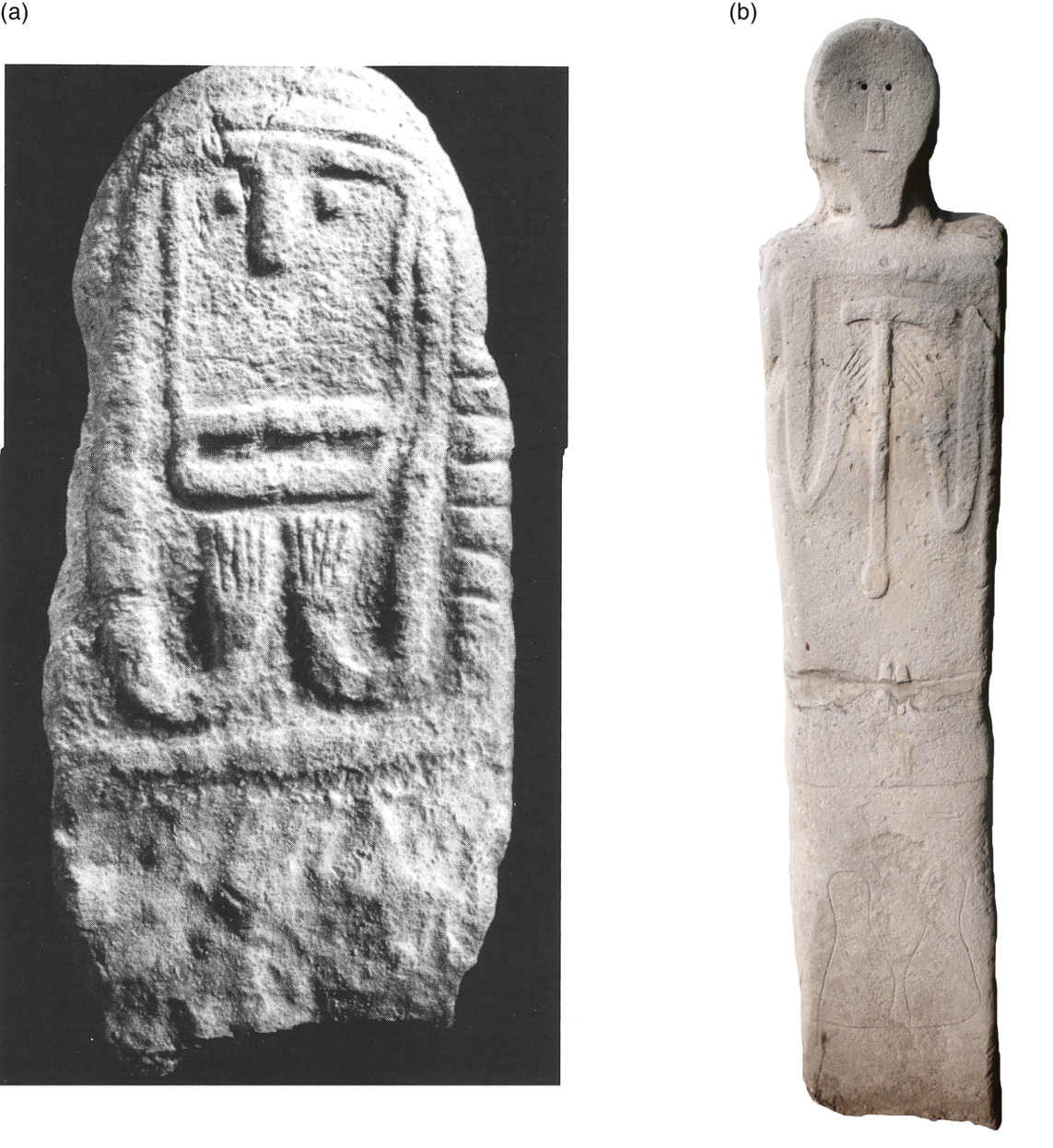
Fig. 15. a) Maison Aube, Languedoc. Cat. No. 1055 (after D‘Anna et al. Reference D’Anna, Gutherz, Jallot, Casini, De Marinis and Pedrotti1995, fig. 10, reproduced by permission); b) Cioburciu, Moldavia. Cat. No. 0274 (photo: S. Hansen)
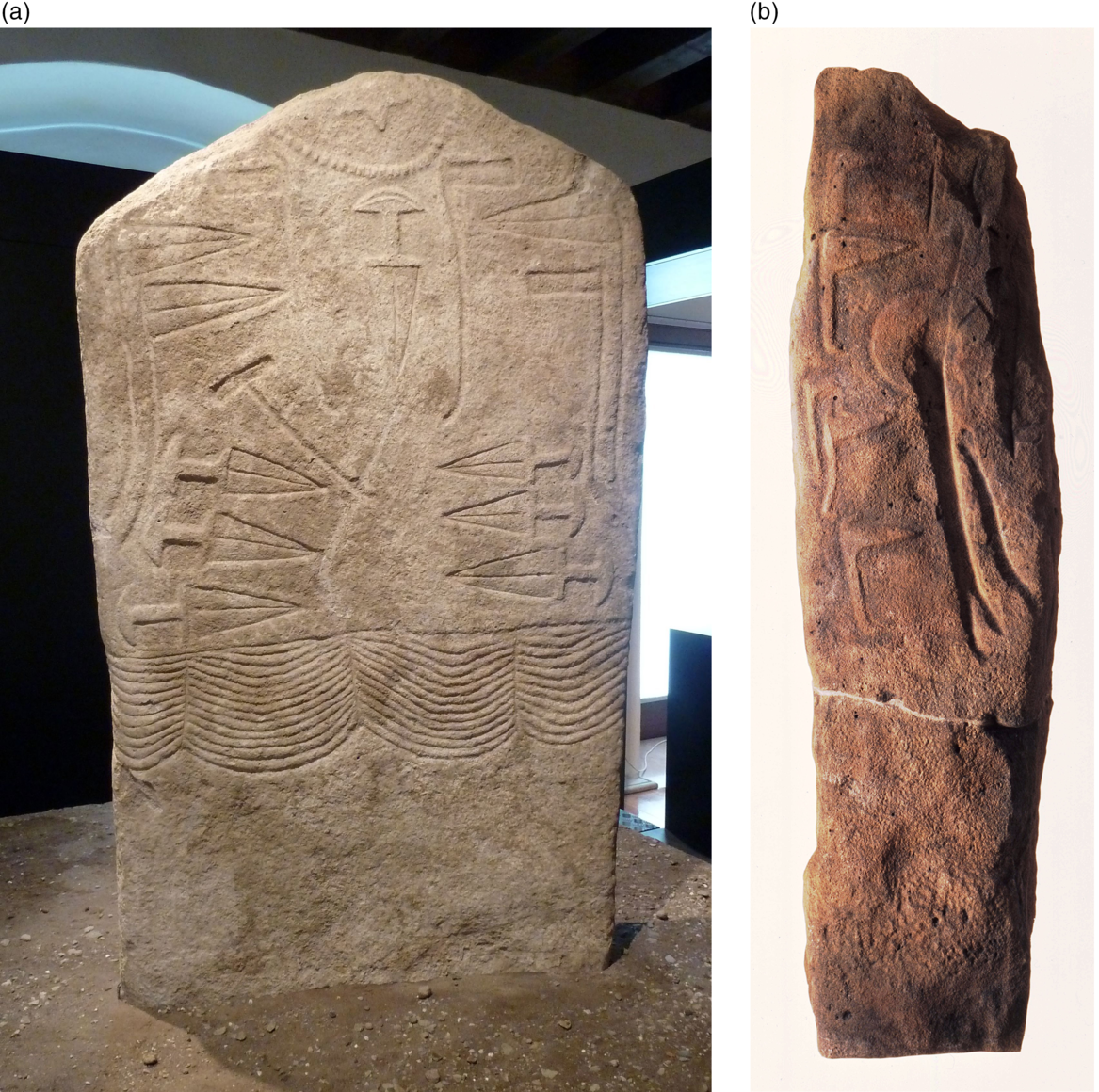
Fig. 16. a) Arco 1, Trentino. Cat. No. 0518; b) Tübingen-Weilheim, Germany. Cat. No. 1309 (photos: S. Hansen).
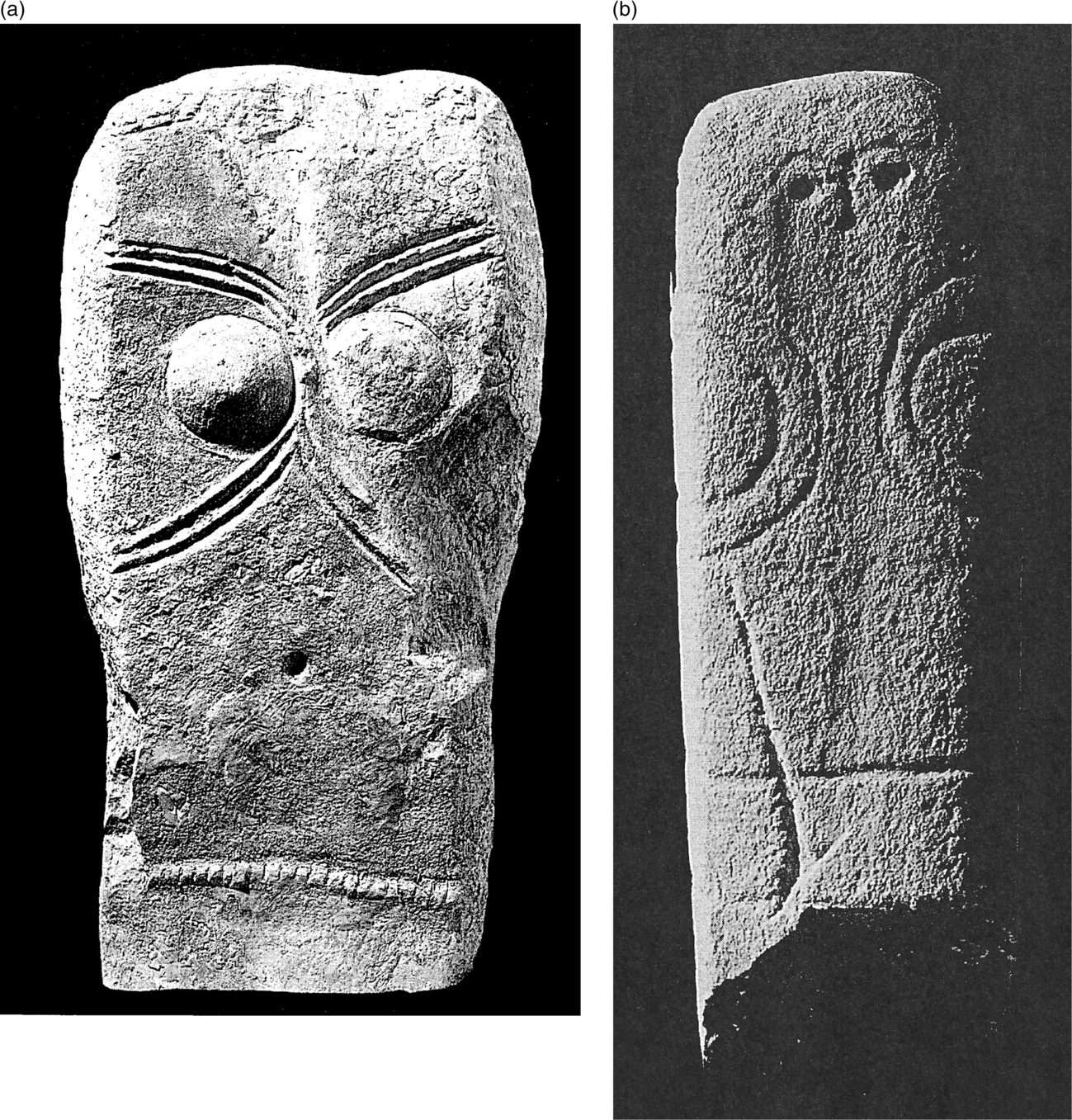
Fig. 17. a) Sterparo Nuovo 11, southern Italy. Cat. No. 0443 (Ambrosio Reference Ambrosio1998, pl. 9); b) Cabeco da Mina 1, Portugal. Cat. No. 1449 (Jorge Reference Jorge1999, fig. 4) (images reproduced by permission)
According to the current state of research and based on the exploding discipline of archaeogenetics, which has analysed the ancient DNA of Europeans from the 6th to the 3rd millennia bce in hundreds of gene sequences, one can assume a massive expansion from the Pontic area westwards from about 2800 bce (Allentoft et al. Reference Allentoft, Sikora, Sjögren, Rasmussen, Rasmussen, Stenderup, Damgaard, Schroeder, Ahlström and Vinner2015; Haak et al. Reference Haak, Lazaridis, Patterson, Rohland, Mallick, Llamas, Brandt, Nordenfelt, Harney, Stewardson, Fu, Mittnik, Bánffy, Economou, Francken, Friederich, Garrido Pena, Hallgren, Khartanovich, Khokhlov, Kunst, Kutznetsov, Meller, Mochalov, Moiseyev, Nicklisch, Pichler, Risch, Rojo Guerra, Roth, Szécsényi-Nagy, Wahl, Meyer, Krause, Brown, Anthony, Cooper, Alt and Reich2015; Reich Reference Reich2018; Wang et al. Reference Wang, Reinhold, Kalmykov, Wissgott, Brandt, Jeong, Cheronet, Ferry, Harney and Keating2019). After the first 100 years of these migration movements, the steppe inhabitants had advanced to the west of the Black Sea and, after another 200 years, to the region of middle Elbe and Saale (Krause & Trappe Reference Krause and Trappe2019). As a result of this strong westwards migration of Yamnaya people, the genetic structure of people in central and western Europe changed. As a consequence of this development, we still carry this genetic structure within us today, as comparative DNA analyses with modern Europeans have shown.
Already after the Second World War, some archaeologists put forward the hypothesis of migrations from east to west. The appearance of features of northern Pontic tradition, such as the large burial mounds, in the west was reason enough for Gimbutas, Anati, and Mallory to support the migration thesis. All three authors explicitly included the distribution of anthropomorphic stelae in their discussions. Much attention was paid to Gimbutas’s assumption that several incursions of warlike Kurgan peoples into the peace-loving and egalitarian Neolithic cultures of old Europe took place and brought about a change in the symbolism of the stelae (Gimbutas Reference Gimbutas1996). For her, the anthropomorphic stelae of the Ponticum are symbols of the warlike, male Indo-European deities, who replaced the hitherto female deities of Old Europe, as depicted on the Mediterranean stelae. Anati assumed a mythological meaning for the sun motifs on stelae and rock paintings of the Val Camonica and Valtellina as well as in Sion, whose origin lies in the Indian Vedas and other Asian myths (Anati Reference Anati1968). He also saw an Indo-European reference in his postulated three-storey structure of most of the depictions in Val Camonica (Anati Reference Anati1977). Mallory and Telegin critically examined the hypothesis of the Indo-European roots of anthropomorphic stelae by Gimbutas and Anati (Telegin & Mallory Reference Telegin and Mallory1994). They did not see sufficient proof for its plausibility, although Mallory himself was a supporter of the migration thesis (Mallory & Adams Reference Mallory and Adams1997). As late as 2002, however, Dergačev referred to Gimbutas’s 3-wave theory and confirmed it (Dergačev Reference Dergačev, Boyle, Renfrew and Levine2002).
In the late 20th century, especially in German archaeology but also in the USA, these hypotheses about migration were rejected, independently and no matter whether they referred to the neolithisation of Europe in the 6th millennium or meant the spread of southern Russian steppe peoples to the west 3000 years later. The reason was the ideological load of the idea of a migration with an ethnic component: Kossinna’s folk archaeology and its notorious equation of exactly defined archaeological cultural areas with specific peoples (Kossinna Reference Kossinna1911) fitted into the nationalistic ideologies of the early 20th century. This thesis and the relocation of the origin of the Indo-Europeans and thus of the Aryans to northern Europe formed a central argument for the National Socialist ideology of the superiority of the Aryan ‘race’. This was reason enough to distance oneself from corresponding migration theories, as Childe did at the time of Hitler’s accession to power (Childe Reference Childe1933; cf. Hansen Reference Hansen, Hansen, Molodin and Mylnikova2019), though many archaeologists did not until well after the war (Eggers Reference Eggers1959; Wotzka Reference Wotzka1997, 163–76).
Today, archaeogenetic data are available which, to the surprise of many archaeologists, confirm a largescale migration from east to west in the 3rd millennium. Interdisciplinary cooperation with geneticists has scientifically dispelled the scepticism of archaeologists and has proven the immigration to be the case both for the Anatolian farmers who brought the neolithisation of Europe and for the Yamnaya people. However, the substantial spreading to the west of the relevant genetic make-up as well as archaeological features of the steppe inhabitants only began to take place around 2800 bce (Krause & Trappe Reference Krause and Trappe2019). But by this time anthropomorphic stelae had already existed in western Europe for at least a millennium. The Yamnaya migration therefore had nothing to do with an origin of the stele idea in the east. However, studies of ancient DNA show that there had been various times of mixing between Europe and the Russian steppes even before the great wave of migration in the 3rd millennium, in both directions (Wang et al. Reference Wang, Reinhold, Kalmykov, Wissgott, Brandt, Jeong, Cheronet, Ferry, Harney and Keating2019). Another result of the aDNA investigations is that the population of central Europe was also exposed to influences originating from western and northern European regions (Brandt et al. Reference Brandt, Haak, Adler, Roth, Szécsényi-Nagy, Karimnia, Möller-Rieker, Meller, Ganslmeier, Friederich, Dresely, Nicklisch, Pickrell, Sirocko, Reich, Cooper and Alt2013). Simple anthropomorphic stelae older than the Yamnaya horizon are also found in the steppes north of the Black Sea. Although the vast majority of Ukrainian and Russian stelae originate from Yamnaya burial contexts there, and even in graves of older periods (Kemi-Oba and Majkop), they can be found only in secondary use (Telegin & Mallory Reference Telegin and Mallory1994; Belinkskij et al. Reference Belinskij, Hansen, Reinhold, Tonussi and Rova2017). More recent datings of stelae by Ukrainian authors from 3200 until the end of the 2nd millennium (Dovženko Reference Dovženko and Zabašta2009) are therefore not convincing. With this dating, both the simple and the decorated stelae would date from the Yamnaya period. Datable contexts for the original position of stelae in the Black Sea region are still missing. As long as there are no dates for stelae in the Pontic region, it is not possible to assume that the concept of stelae originated in the east. Rather, they seem to have arisen as part of the Atlantic megalithic culture in western Europe, which began in the 5th millennium.
Harrison and Heyd, in their work on the Petit-Chasseur necropolis in Sion, as an example of the transformation in Europe in the 3rd millennium, assume a migration as given (Harrison & Heyd Reference Harrison and Heyd2007). The processes of change in Sion, ie, the construction and, not long afterwards, the destruction of the richly decorated stelae of the Beaker period (style B), are interpreted by Harrison and Heyd as struggles within the same community. Their original ideology of the Beaker Culture, with its south-western orientation, had been violently attacked and replaced by an antagonistic world view that originated in the east. The cultural attitude of the aggressors had emerged under the influence of the Yamnaya migration. The Beaker ideology which was valid until now, with its stelae presenting the prestige and identity of individuals and groups, was no longer accepted by the successors. The representatives of the new ideology defeated their rivals. While Harrison and Heyd interpret the two archaeologically recognisable conflicts in Sion as an internal struggle against the culture of the stelae builders (Harrison & Heyd Reference Harrison and Heyd2007), they understand the migration from the north Pontic steppes to the west as being the cause of the Europe-wide change over the course of the 3rd millennium, whereby they add the genetic identification of the immigrants as a research desideratum. Today, this is the predominant archaeogenetically proven interpretation. The ‘Yamnaya Package’, which Harrison and Heyd postulate in analogy to the ‘Bell Beaker Package’, for them contains, not quite unambiguously, the anthropomorphic stele which, among other components, came with the immigration from the east. However, this information in two images (Harrison and Heyd Reference Harrison and Heyd2007, figs 45–6 and p. 196) contradicts the list of ‘Yamnaya Package’ components in the text. Migration existed, but the Yamnaya package in this definition did not. The Yamnaya migration is ascribed an influence on the ideological transformation that related to the grave furnishings in Sion and did not leave a single stele in its original position. As a consequence of this interpretation, it remains that this influence does not in any way mean that the pastoral steppe-dwellers introduced the anthropomorphic stele to central and southern Europe during their migration to the west.
INTERPRETATION
Investigations of stele contexts in different areas suggest several interpretative hypotheses on the socio-cultural function and significance of anthropomorphic stelae. On the one hand, they represent images of the ancestors. In their function of reminding later generations, they are meant to enable them to share in the importance of their ancestors. On the other hand, they symbolise socially prominent individuals or clans. In addition, each symbolic function also contains a ritual one. And, finally, we may see in the monumental depiction of human beings a new self-image of the people of that time as an expression of cultural self-confidence.
First, it should be noted that archaeologists today agree that anthropomorphic stelae are used to represent people. The thesis that the stone stelae represent deities (Arnal Reference Arnal1976; Mezzena Reference Mezzena1998) or that they provide access to them (De Marinis Reference De Marinis1994a; Casini Reference Casini1994; Casini & Fossati Reference Casini2007; Poggiani Keller Reference Poggiani Keller2009) is largely considered untenable (Gallay Reference Gallay2009). In 2008, Casini thus departed from her earlier interpretation and, regarding the stelae of Val Camonica and Valtellina with female attributes, no longer speaks of deities, but of human women. The stele attributes there could be found in women’s graves (Casini Reference Casini2008, 5–20). D’Anna deviated from previously expressed interpretations and no longer ascribed a religious function to stelae, even in ritual contexts (D’Anna Reference D’Anna2002). For Robb, who in another, more philosophically oriented approach, explored the relationship between the living body and the represented body, stelae are images of people (Robb Reference Robb2009).
In some Iberian regions, early anthropomorphic rock paintings and stones can be found erected above burial sites and settlements (Bueno et al. Reference Bueno Ramirez, Barroso Bermejo, de Balbin Behrmann, Bettencourt, Jesus Sanches, Alves and Fábregas Valcarce2010), as if they resided above the clan’s territory. According to the authors, the stelae were meant to preserve the group’s memory of the represented ancestors and of the fact that this was their landscape for the builders themselves and the following generations. A famous example is Peña Tu, a rock that dominates a mountain side in Asturias (Fig. 18). One rock face is engraved and painted with an anthropomorphic figure in a rectangular shape with a semicircular top. Like on other northern Spanish stelae with a similar motif, such as Tabujo del Monte (Fig. 19), an engraved dagger or halberd was added to this figure afterwards, in the 3rd millennium. The armed individuals are depicted as the heirs of their ancestors who, like those in stone, dominated their landscape. Altering the representation by adding newly emerging metal objects does not show a radical cultural change, rather it shows that known social practices are being continued and used. The traditional iconography justifies the descendants’ power. Prestige objects such as daggers and halberds are given the function to affirm the status of the represented.
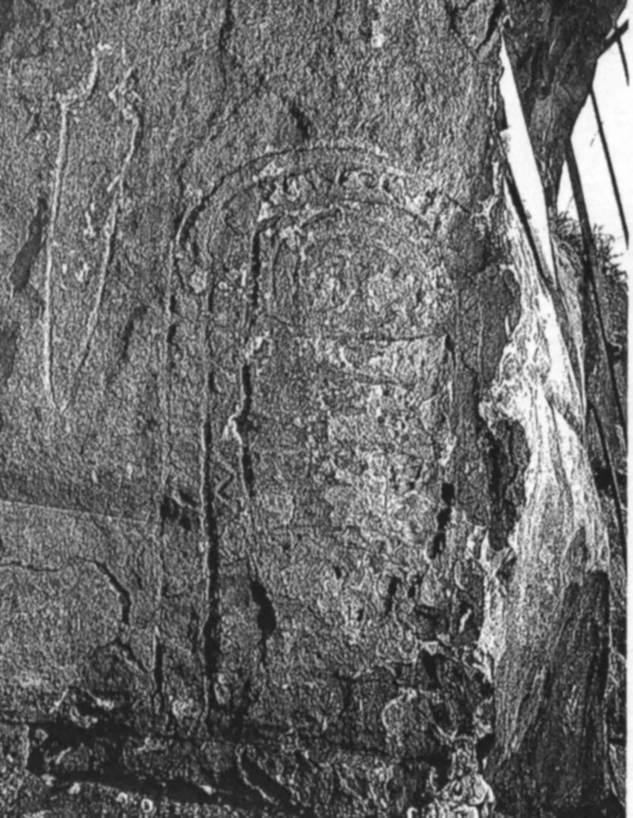
Fig. 18. Peña Tu, Spain. Cat. No. 1354 (after Bueno & Fernandez Reference Bueno and Fernandez1981, fig. 3, reproduced by permission)
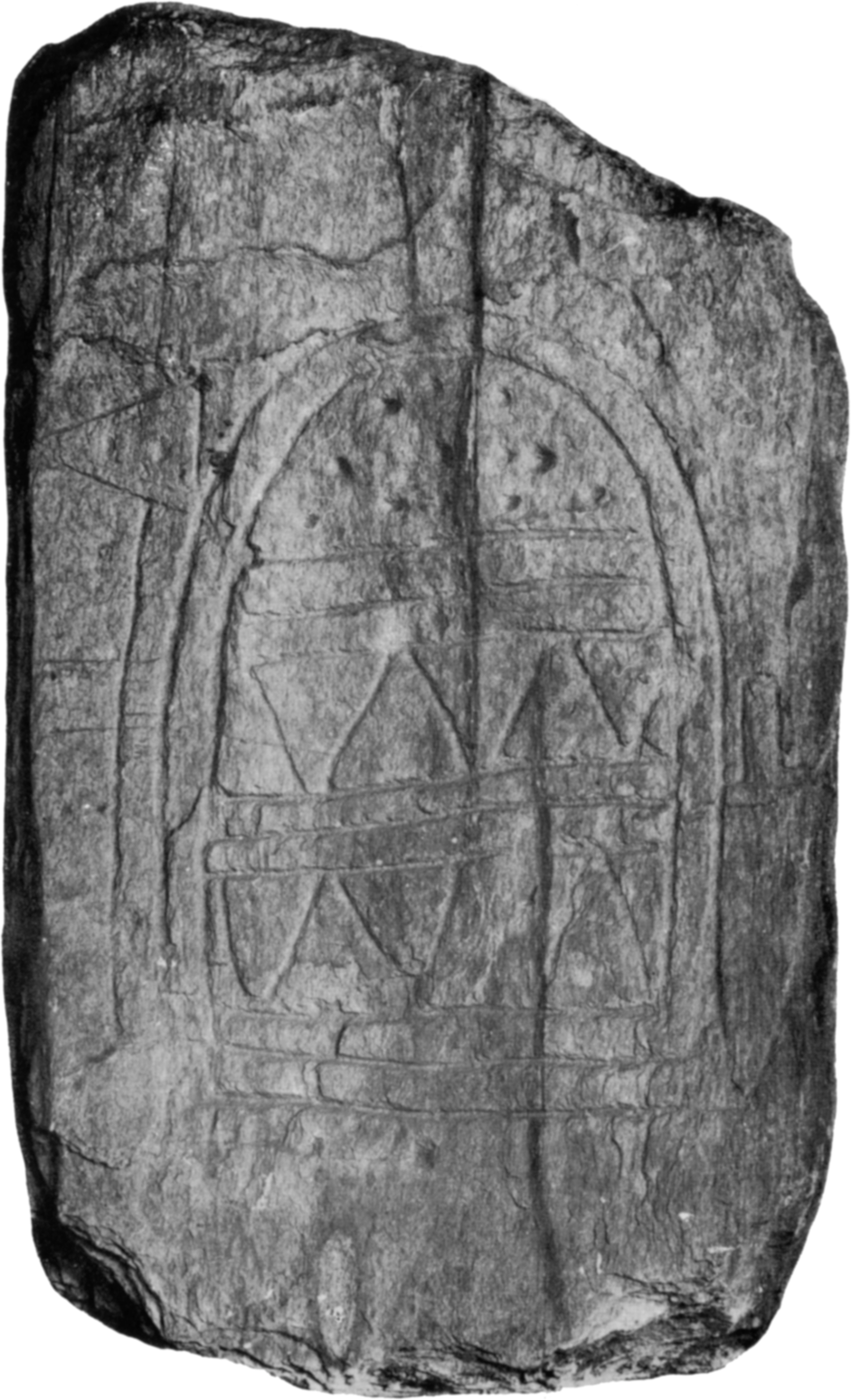
Fig. 19. Tabujo del Monte, Spain. Cat. No. 1395 (Almagro Basch Reference Almagro Basch1972, fig. 12, reproduced by permission)
Many stelae further indicate increasing social inequality. The stelae in the necropolises of Sion and Aosta for instance are images of individuals with high social status (Gallay Reference Gallay1995b; Reference Gallay2011). Prestige goods shown are not only weapons assigned to men, but women of rank are also counted among the stone figures here. However, in both contexts the continuity of tradition is broken. The following situation is presented: in Aosta, the beginning is made with an alignment of wooden stelae. At both sites, the erection of stelae of style A (see above) follows. This first change is followed by another, in which richly decorated stelae of style B are erected. A third transformation in the 3rd millennium left only manipulated stelae as building material for tombs. A tradition of more than 1000 years becomes visible, based on several radical ideological changes. For Gallay, these stele figures represent actual clan leaders. He offers various hypotheses for the destruction of the stelae. First, destruction symbolises the physical death of the individual who was pictured during his or her lifetime. Second, the stele is erected after the death of the clan chief and placed at his grave in his memory. After the individual’s loss of significance, the stele is broken up, thus the depicted experiences a ‘social death’, as it were. Third, the depicted individual is alive, but loses power and influence. In this case, too, the person ‘dies socially’ when the stele is smashed. Seen in this light, even the act of destroying the stele reflects an awareness of the ancestors’ importance (Gallay Reference Gallay1995b; Reference Gallay2011).
Another region where the contexts provide information on the function of anthropomorphic stelae are Val Camonica and Valtellina. Numerous contexts there have been discovered and evaluated during systematic excavations since the 1980s. The stelae in these two pre-Alpine valleys have no connection with burials but were put in place at exposed sites and are impressive landmarks in the landscape (Poggiani Keller Reference Poggiani Keller, Pessina and Visentini2006; Reference Poggiani Keller2009). This is another function of stelae. Placed here in rows, elsewhere in circles, they can be interpreted as places for ceremonies or rituals. Apart from decorated anthropomorphic stelae, each of the Alpine contexts in Val Camonica, Valtellina, and also in Aosta and Sion also has a stone structure, be it a platform or a tumulus of piled stones or a perimeter wall. At some of these sites, complex ritual acts are documented archaeologically by votive offerings. These are prestige objects made of stone, pottery, horn, bone and metal, and slag leftovers from copper extraction, as well as fruit and flowers. The remains of fire were found at all sites. In two locations (Cemmo and Aosta), plough tracks have been found underneath visible structures such as stelae and piled up stones. These are to be understood as a founding ritual. Not least among the rituals at these sites are the erection and engraving of stelae (sculpting tools were found in Ossimo-Anvoia). But their partial destruction, over-engraving and the new uses of their fragments are also being interpreted as a ritual act (Poggiani Keller Reference Poggiani Keller, Pessina and Visentini2006; Reference Poggiani Keller2009).
Other than in the areas mentioned above, ritual stone arrangements are found in the Lunigiana (Iardella et al. Reference Iardella, Landi, Paribeni and Tiscornia2005) and in Puglia (Tunzi Sisto Reference Tunzi Sisto1997). On the Iberian peninsula stone circles are known above all in Portugal. But stelae in arrangement are also seen in northern Spain (Bueno et al. Reference Bueno Ramirez, Barroso Bermejo, de Balbin Behrmann, Bettencourt, Jesus Sanches, Alves and Fábregas Valcarce2010) and in Ukraine (Telegin & Mallory Reference Telegin and Mallory1994). In a wider sense, every anthropomorphic stele or group of stelae that was put up, whether associated with a burial or standing at a prominent point in the landscape, has ritual meaning.
The overall appearance of anthropomorphic stelae is their monumentality. The representation of people en grand (Philippon Reference Philippon2002b) shows a fundamentally changed self-assessment of humanity. In this epoch of innovation and transformation, humans experienced themselves anew. They no longer perceived themselves as passive part of the cosmos, but as doers, as creators. This was made visible in the size of the human image. People in the Chalcolithic period symbolised their changed role in the world with the great stone stele.





















